Ed Gorman's Blog, page 126
June 15, 2013
Female Noir
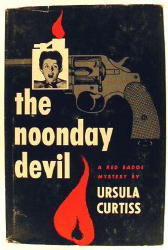
SATURDAY, FEBRUARY 16, 2008Female noirThere's been some discussion on a couple of blogs about female noir. Steve Lewis lead of with an excellent overview of Ursula Curtiss's dark domestic mysteries and Juri Nummelin responded in laying out the basic elements of the sub-genre.
Juri Nummelin Says: Steve Lewis
February 15th, 2008 at 11:56 am
Yes, sure, that’s the main point, but I think the lead character should have to be a woman (well, in that case, Curtiss’s novel wouldn’t fit) and the settings would have to be somewhat mundane and ordinary, just everyday life which is suddenly filled with terror. I think, and I must point out that this is based only on hearsay and not any research, that female noir was mutated into gothic romance in the late sixties and seventies. Gothic romance just became so formulaic so soon that it got difficult to tell its roots.
And I also think that female noir, for some reason or another, isn’t so strong on negative endings as male noir. Even though Dorothy Hughes is pretty bleak in her own novels that fit the bill. (Not her last one, what’s it called, from 1963?) Margaret Millar and Patricia Highsmith have also rather pessimistic endings. I wish someone with better knowledge than mine would do an article on female noir. Wait, Kevin Burton Smith is writing a book on female hardboiled authors, so he’ll be covering this ground too.
Ed here: then tonight on Vintage Hardboiled Reads August West talks about my longtime favorite Elizabeth Sanxay Holding:
The Blank Wall by Elisabeth Sanxay Holding
Pocket Book 662, Copyright 1947
I have aways heard fine things about this story and after passing it over may times to read something else, I finally got around to it. It's a strong psychological thriller, with a fine dose of mystery. The story of upper-class Lucia Holley obsessively protecting her family from scandal during WWII.
"And all that had happen to her would be, must be, pushed down, out of sight; the details of daily living would come like falling leaves to cover it."
While her husband is away at war, Lucia Holley is left with the responsibility of caring for her teenage children and her husband's father. These are the days of rationing coupons, shortages and lonely letters to loved ones in war. She is approached by a blackmailer that has some scandalous letters written by her daughter to an older man. Lucia, unable to pay the amount, starts a lonely struggle to do anything to protect her family. There is a killing and later a murder, which is related to the blackmail attempt. Lucia is spiraling with worry and panic as her involvement deepens.
Usually the female authors I read have male characters as protagonists in their crime stories. I was always stuck on Leigh Brackett, Dorothy Hughes, the Jim Sader novels by Dolores Hitchens. I was presently surprised with the characters in "The Blank Wall," especially Lucia Holley and Martin Donnelly, and I be looking forward to reading more from Elisabeth Sanxay Holding.
Note: Two movies based on this novel. "The Reckless Moment" (1949) and "The Deep End." (2001)
Ed here: August makes the point that Holding isn't hardboiled and I think that's true. But that doesn't mean she isn't more psychologically complex --and thus more rewarding--than many hardboiled writers. She had a streak of Edith Wharton in her fascination with the upper classes. Her novels are studies of their manners, whims, hypocrisies and failures. As Juri points out the terror of the everyday can be just as grim as the terror of the dark alley.
Holding used a variety of tropes in her work. The shipboard romance becomes a portrait of a fetching even likable gold-digger (who won't admit to herself that she's a gold digger) and a wartime murder that may involve espionage. She was also capable of pure phantasmagoria. I'm sure that Dorothy B. Hughes was a fan of hers. There are marked influences in Hughes' novel In a Lonely Place and several of Holding's books. Enriching her suspense elements was her sly quiet humor. She believed that we were all fools on one big Ship of Same. Raymond Chandler called her the best suspense writer of his generation. Even if he was bombed when he said it, it is still true.
I'm glad to see that Kevin Burton Smith is going to write a study of these women. They certainly deserve to be read.
Published on June 15, 2013 11:36
June 14, 2013
Employees Entrance

Ed here: I saw this film the other night and was astonished by how amoral, sophisticated, amusing and psychically painful it was in places. Being a good Catholic boy I had this burning crush on Loretta Young when I was in Catholic grade school (she was in many of the Catholic movies). But I had no idea she was ever in movies like this one. She is so so sexy and genuinely vulnerable here I want to see more of her pre-Code movies. What a babe and what an actress. I found this excellent piece on the film. BTW Warren Williams gets knocked sometimes but man he's also at the top of his game here.
Go here ShadowsandSatin for the entire piece http://shadowsandsatin.wordpress.com/...
Employees’ Entrance (1933) stars the dashing and delightfully bad Warren William, Loretta Young and Wallace Ford. It’s one of the first pre-Code movies I ever owned, part of the Turner/MGM/UA “Forbidden Hollywood” series, and it’s a gem. The film’s principal characters are Kurt Anderson (William), the ruthless manager of a giant department store, who will do anything to succeed; Madeleine Walters (Young), who pays a steep price when she goes to work in Anderson’s store; and Martin West (Ford), who is hired as Anderson’s protégé and is secretly married to Madeleine. Based on a play by David Boehm (who was later nominated for an Oscar for the 1944 Spencer Tracy starrer A Guy Named Joe) and directed by Roy Del Ruth, Employees’ Entrance is, as my treasured VHS copy declares, “filled with forbidden pleasures!” Here are some of the reasons why I love this film:
Kurt Anderson is not a nice guy, but he sure is fun to watch. In one scene, he fires a 30-year employee of the store, in front a room full of co-workers, because the man is “too old, too set.” The distraught former employee later commits suicide. When Anderson is told, he observes, “When a man outlives his usefulness, heought to jump out of a window. That’s the trouble with most men – they don’t realize when they’re through.” In another scene, after a store detective mistakenly detains a newspaper editor’s wife for theft, Anderson gives the woman a concert grand piano to compensate for her inconvenience, and tells the guard he’ll take ten dollars a week out of his salary until it’s paid for. When the man protests that it will take him the rest of his life to pay the debt, Anderson retorts, “I doubt if you’ll live that long. Get out.”
In typically scandalous pre-Code fashion, Kurt appears to be a benevolent benefactor when he hires the job-seeking Madeleine, but after treating her to a much-needed meal, he winds up seducing her. And later, when Madeleine gets drunk at a party following a fight with her husband, Kurt invites her to sleep it off in his room – and you can just guess what happens.
Published on June 14, 2013 14:47
Steven Spielberg's Nightmare Scenario For Hollywood Is Already Coming True
From Yahoo Finance:Steven Spielberg's Nightmare Scenario For Hollywood Is Already Coming True
Steven Spielberg's Nightmare Scenario For Hollywood Is Already Coming TrueBy Kirsten Acuna | Business Insider – 1 hour 21 minutes ago• Email • Like Recommend • 188
Paramount PicturesWould you pay $50 to see "World War Z" before anyone else?Earlier this week, Steven Spielberg said the movie industry was about to implode.Specifically, while speaking at USC Spielberg noted that since so many movie studios are opting to bet on one large $250 million budget film rather than a few smaller films, this will eventually result in a giant meltdown for Hollywood.George Lucas followed up predicting that going to the movies will be a Broadway event costing anywhere from $50 to $150 dollars one day. It looks like they're right.Paramount announced it will sell $50 tickets for people to view showings of Brad Pitt's zombie thriller "World War Z" June 19 — two days before the film's release.Remember, this is the movie that was receiving a lot of bad press after a Vanity Fair cover article revealed the film's budget inflated to around $200 million and a costly 40-minute reshoot of the endhad to take place. Paramount is pairing up with Regal Entertainment Group to bring the costly package to consumers.Not everyone will be able to get in on the deal.These "mega tickets," as Paramount is coining them, will be available in five markets — Houston, TX, Los Angeles, Atlanta, Philadelphia, and San Diego.What does $50 get you?Here's what's inside the "mega-ticket" package:• One ticket• One HD digital copy of the movie when it comes out• One pair of "World War Z Custom" 3D glasses • A limited-edition movie poster and a small popcornParamount says all of this amounts to $75 worth of paraphernalia.
Kirsten Acuna /Business InsiderHere's a free poster we received when purchasing an $18.50 ticket for an early IMAX 3D "Star Trek Into Darkness" screening.When we went to an early showing of "Star Trek Into Darkness" we paid $18.50 for a single ticket (in New Jersey) and received 3D glasses and a sweet glow-in-the-dark poster for free.We had to give the 3D glasses back; however, other films in the past have given out free 3D glasses along with tickets. "The Avengers" and "Harry Potter" come to mind.Typically, an HD copy of a film goes for about $40 on release.That's about $60.A small popcorn costs a lot these days (close to $6 in some theaters), but there's no way it costs $15. The least Paramount could have done was throw in a soda, too.Paramount knows it needs "World War Z" to do immensely well at theaters to not only earn back its outstanding budget, but to also make a profit. Selling pricey tickets would help a little.At the end of the day, if you shell out $50 for one of these WWZ tickets, you're basically getting bragging rights to see a film that isn't even the most-anticipated of the year before anyone else and an HD movie.
Published on June 14, 2013 14:14
June 13, 2013
New Books: Get Hit, Hit Back by John Kenyon

From John Kenyon on his New Book:
Come in as a bank robbery is unfolding. Gang of three is leaving with a bag of money, pursued by the security guard, who shoots two, including the one with the money. The third gets to a getaway car and leaves. The guard realizes he's in an alley with no witnesses, so he grabs the money and throws it in the trunk of his nearby car. He radios back to the bank that the third man got away with the money.
A paragraph later, I note that the bank guard is an amateur boxer, who will ultimately use his fists to get out of the hole he has dug for himself.
At some point, I fleshed out the idea with all kinds of complicating details, filling the next page in the notebook with ideas about alternating chapters from different points of view, and adding characters like the destitute father of the guard who could use the money.
I went so far as to type out a couple thousand words and saved it as "Hard Case story," thinking that it was the kind of story that would fit well with Charles Ardai's then relatively new imprint.
And then... nothing. Other ideas came and went, Hard Case took off, and the story of my bank guard-boxer languished. But he was never forgotten. I knew there was a good story there, and thought about it regularly.
The missing piece came when I learned about the Fight Card Series, edited by Paul Bishop and Mel Odom. I learned about it from Eric Beetner, a great crime writer I'm lucky enough to call a friend, who had his own early entry in the series. The series is an homage to the great boxing novels of the 1950s, with a handful of authors writing novellas all published under the pen name of Jack Tunney (think Jack Dempsey and Gene Tunney).
I read the first few and loved them, and realized this was the forum my story needed. I had played around with different eras, but the 1950s was where the story belonged. And while I had cooked up enough bells and whistles to fill a novel, I knew the story would hit hardest if streamlined, something the constraints of the novella would allow.
The last thing I needed was a title. Credit Warren Zevon for that. I took liberties with a lyric from his song, "Boom Boom Mancini" from his great album, Sentimental Hygiene: "The name of the game is be hit and hit back," to come up with Get Hit, Hit Back .
The result is a tough little novella, true to the books that inspired it by suggesting more than it shows. As much as anything, it's a reminder to writers to never throw anything away.
Published on June 13, 2013 13:35
June 12, 2013
Looking Back at (and in) DETOUR
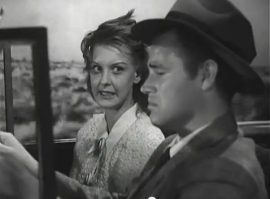
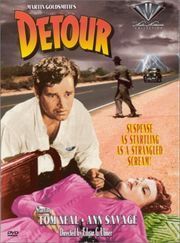
Ed here: This is a long but worthwhile look at "Detour" from Movie Morlocks. It also gives us some intriguing background on the intriguing Edgar G. Ulmer.
 Posted by Shannon Clute on June 9, 2013A recent weeknight found me flipping through my DVD collection looking for a film I could watch in one sitting. No BEN HUR on a Wednesday. No HIS GIRL FRIDAY, for that matter. I’ve discovered I have about 80 minutes on weeknights before my brain turns to pudding, which has led to a steady regimen of B movies from Poverty Row during the week and masterworks from the Majors on weekends. On the day in question, the B film was DETOUR (1945), a 68-minute gem from Producers Releasing Corporation (their productions spanned from I TAKE THIS OATH in 1940 to the equally ill-remembered IN THIS CORNER of 1948).
Posted by Shannon Clute on June 9, 2013A recent weeknight found me flipping through my DVD collection looking for a film I could watch in one sitting. No BEN HUR on a Wednesday. No HIS GIRL FRIDAY, for that matter. I’ve discovered I have about 80 minutes on weeknights before my brain turns to pudding, which has led to a steady regimen of B movies from Poverty Row during the week and masterworks from the Majors on weekends. On the day in question, the B film was DETOUR (1945), a 68-minute gem from Producers Releasing Corporation (their productions spanned from I TAKE THIS OATH in 1940 to the equally ill-remembered IN THIS CORNER of 1948).There’s a lot to love about DETOUR, starting with the obvious talents of director Edgar G. Ulmer and lead actors Tom Neal and Ann Savage. Savage turns in a particularly strong performance, living up to her name as one of the most vicious femmes fatales in the history of film noir. If Jane Greer’s Kathie Moffat is a quicksilver promise in the moonlight and Ava Gardner’s Kitty Collins is some mythological siren, Savage’s Vera is a rabid pitbull. For a moment, Neal’s Al Roberts makes the mistake of thinking she’d be a cute pet, then she sinks her teeth and he can’t shake her. There is no other performance I can think of that matches it for pure savagery.
But as I watched this film again, what struck me most is how carefully Ulmer crafts flashbacks, and how these transitions seem to invite us to pay closer attention to all moments of retrospection in the film. If we do, we understand two things. In terms of the story, we see Al is doomed because of his inability to look beyond the past. In terms of production, we see DETOUR is a work of art, for it seamlessly joins message and medium.
This might seem like a big claim for such a small picture, but there is evidence for making the case both within the movie and in the arc of Ulmer’s career, for he had a hand in groundbreaking works and lavish productions alike before delving into B pictures. His first film, MENSCHEN AM SONTAGG (PEOPLE ON SUNDAYS, 1930), was extremely influential and quite successful—a precursor to neorealism in its use of non-professional actors featured in real and staged scenes of daily life. Also remarkable was the crew of that film, which included Robert Siodmak, Curt Siodmak, Billy Wilder and Fred Zinneman (providing further proof, if any were needed, that film noir is distinctly American in the same way as Jazz; it too was born at the crossroads of foreign and American cultural influences—in this case German visual sensibilities and American hard-boiled storytelling). A scant four years later, Ulmer would be at the helm of BLACK CAT for Universal Pictures, creating a vision no less unique, though with a more impressive budget.
for the rest go here:
http://moviemorlocks.com/2013/06/09/l...
Published on June 12, 2013 13:29
June 11, 2013
The Confessions of Al Capone by Loren D. Estleman
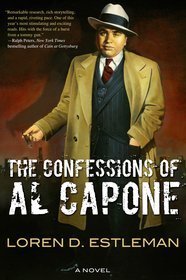
The Confessions of Al Capone [Hardcover]Loren D. Estleman (Author)
Release date: June 11, 2013
Multiple award-winner Loren D. Estleman has produced a major biographical novel on the infamous Mobster known as Scarface, rigorously researched and deftly nuanced to offer an intimate portrait of the gangster whose terrible crimes and larger-than-life persona have both fascinated and appalled the world for nearly a century; whose legacy is still widely debated; and whose brutally ambitious career in the Mafia continues to inspire filmmakers and writers to plumb its excesses and its contradictions.
In 1944, after Al Capone has been released from prison, J. Edgar Hoover assigns an FBI junior agent to insinuate himself into Capone's life and gain his trust so that Hoover can nail as many of Capone's Mob confederates as possible. Capone, suffering from the neurological effects of syphilis, is alternately lucid, full of the passion and energy that fueled his rise to the pinnacle of American crime…and rambling or ranting, the broken shell of a man released from prison so he could die at home with his family.
With the superb narrative gifts honed in dozens of novels, Estleman has captured the essence of this American icon as never before. With subtly nuanced portrayals of those in Capone’s circle—his underrated wife Mae Capone, members of the Chicago Outfit including the deadly Frank Nitti—as well as his nemesis, J. Edgar Hoover, Hoover’s secretary Helen Gandy and others, The Confessions of Al Capone is a major literary achievement.Amazon is running part of the first chapter, btw.
Published on June 11, 2013 13:29
June 10, 2013
FRENCH CONNECTIONS: VERNEUIL, GABIN, DELON by Fred Blosser

FRENCH CONNECTIONS: VERNEUIL, GABIN, DELONby Fred Blosser
I recently noted that 2013 is the 45th anniversary of Don Siegel’s MADIGAN. The Don Siegel of France was Henri Verneuil, whose ANY NUMBER CAN WIN (French title: MELODIE EN SOUS-SOL) observes the 50th anniversary of its U.S. release this year. It was the first of two crime films that Verneuil made with two French superstars of different generations, Jean Gabin and Alain Delon. In American casting during the same era, think Spencer Tracy, Edward G. Robinson, or Charles Boyer as the older man, Paul Newman as the younger one.
Charles, an aging and incorrigible ex-con (Gabin), walks out of prison one day and into his latest job the next. With a set of architectural plans and an impulsive younger accomplice, Francis (Delon), he meticulously sets up a scheme to rob a glitzy Cannes casino. In vintage tradition, the heist comes off smoothly, despite rising tensions between the focused older man and the undisciplined younger one, but subsequent events spin awry.
The movie was based on John Trinian’s novel THE BIG GRAB. The first few scenes are faithful to the source in documenting Charles’ restlessness with domestic life after his reunion with his wife, and his itch to plan the next big score. Trinian could write about small-time career crooks better than almost anyone else. The movie then takes different turns than the novel, doing away with a major Mafia subplot from the book, ratcheting up the growing tension between the partners, and adding an ironic ending that, I’ll bet, was inspired by Kubrick’s THE KILLING.
The movie’s glistening black-and-white, widescreen Dyaliscope cinematography credited to Louis Page is striking, Gabin and Delon are an accomplished team, and today’s audiences who equate crime movies with, say, the bullet-riddled likes of GANGSTER SQUAD will probably be surprised by the fact that few gunshots are fired in the film. Image Entertainment released a nice letterboxed DVD edition several years ago.
In 1969, Verneuil teamed again with Gabin and Delon for THE SICILIAN CLAN (LE CLAN DES SICILIENS), based on a novel by Auguste le Breton, the author of RIFIFI. Ennio Morricone composed the soundtrack. Again, Gabin is a methodical, seasoned professional (this time, as Sicilian patriarch Vittorio Manalese, more successful than his character in the earlier film), and Delon is an edgy younger hood named Roger Sartet, whom Manalese springs from police custody in return for a stash of valuable stamps that Sartet had stolen.
Inspector Le Goff (Lino Ventura, the Roy Scheider of 1960s French gangster movies) has thrown out a dragnet for Sartet, a cop killer. Manalese enlists Sartet in an international scheme to hijack a fortune in diamonds on a jet from Paris to New York. Do they nab the jewels? Do the cracks in Sartet’s partnership with the Sicilians, his imprudent fling with Manalese’s restless French daughter-in-law (Irina Demick), and Le Goff’s relentless manhunt for Sartet bring down the whole enterprise? What do you think?
THE SICILIAN CLAN had a U.S. release in 1970, riding on the popularity of THE GODFATHER on the best-seller lists and the fact that a movie version of the Puzo novel (ultimately the Francis Ford Coppola mega-hit) was still two years in the future. Vincent Canby’s New York Times review was lukewarm (and more luke than warm) but Richard Schickel gave it a favorable notice in Life magazine. I saw the movie in a theater in Charleston, W.Va., when I was 19 years old, and as a newbie, hungry for any fix in hardboiled fiction or cinema in those lean years for gangster movies, I loved it.
Today, when we worry about hijackings but not so much about the likelihood of jewel thieves being the perpetrators, the scenes of stealing the jet seem, well, quaint. Another problem for modern viewers: some of the production techniques don’t hold up well. In particular, the FX in the hijack scenes look primitive. But then, so do comparable shots in the ‘60s James Bond films. Gabin is dead and Delon is too old to play a young hood, but I could see somebody like Luc Besson remaking the movie with modern CGI. They’d probably cast Jean Reno or Nick Nolte in the Gabin role, and Ryan Gosling or Jason Statham as Sartet.
Fox has released a DVD edition abroad, but not in the U.S. Fox Movie Channel carries the film on rare occasions (just this past week, as it happens), which will probably becomes rarer as the channel increasingly moves away from its original format of older, mostly commercial-free movies in favor of edited, commercial-infested newer films.
Published on June 10, 2013 13:40
June 9, 2013
JOYLAND by Stephen King


JOYLAND is the kind of Stephen King novel I most revere. In many ways it's more literary than commercial and more moving than frightening. Let me say immediately that the story here is one of King's best, filled with all the King thrills we demand. Broken-hearted young college man takes a summer job with an amusement park called Joyland, a park that comes complete with an unsolved murder and a dead woman's ghost, or so it is claimed. These elements drive the plot and do so ably; I actually had a nightmare because of the book, something that rarely happens to me. But what makes the book so rich and authentic and classic is the personal story of Devin Jones as he ruminates about his lost love--there are passages that convey pure pain; the melancholy is almost beautifully oppressive in places---and tries to prepare himself for the years ahead. Nobody writes about the young American male than Stephen King and JOYLAND is one of his masterpieces.BTW The topcover is the one Hard Case went with. I ran across the rejected one an artist's website.
Published on June 09, 2013 10:46
June 8, 2013
Burke’s Law Written by Michael Mallory
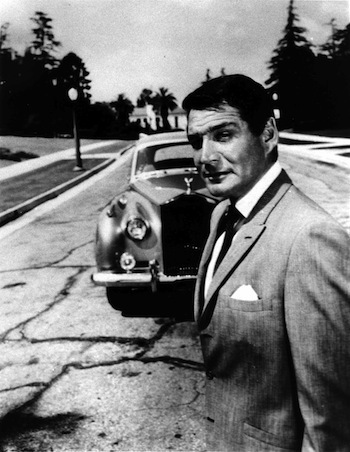
A weekly whodunit so lighthearted it nearly floated away.Gene Barry as Amos Burke on Burke's Law (ABC, 1963-1966). Photo courtesy ABC.
Ed here: Back in my college days I couldn't wait to watch this series. It was my favorite low-comedy show and something of a commentary on the pop culture of the time. This article is now available on the great Mystery Scene website.
Michael Mallory:
In today’s TV world a crime show about a millionaire playboy LAPD homicide detective who shuttles around town in a chauffered Rolls-Royce, all the while dribbling out pithy bon mots, would be hooted off the airwaves. But more than 40 years ago there wasBurke’s Law, a weekly whodunit so lighthearted it nearly floated away. Whimsical as it was, though, Burke’s Law set many of the conventions for mystery series that would follow.
Premiering on ABC in September 1963,Burke’s Law was the first notable success for super-producer Aaron Spelling. More importantly, it pioneered the concept of the special-guest-star mystery show, in which a roster of A (and sometimes B) list celebrities would pop up in cameos, usually as suspects. Later series including Columbo, Ellery Queen, and Murder, She Wrote would all gain traction through this technique, as would the subsequent Spelling hits The Love Boat andFantasy Island.
The Burke of Burke’s Law was Captain Amos Burke, played by Gene Barry, an actor often described as television’s Cary Grant. Barry had filled out his Grant application a few years earlier with the Western series Bat Masterson, but it was his debonair, witty performance as Amos Burke that really cemented his image. There was more of Hugh Hefner than Joe Friday in this L.A. copper, as announced by the breathy female voice that purred, “It’s Burke’s Lawwww,” at the top of each show. The Law of Burke’s Law was the steady string of pertinent aphorisms Burke would toss off extemporaneously as the rules under which he operated.
for the rest go here:
http://www.mysteryscenemag.com/index....
Published on June 08, 2013 12:46
June 7, 2013
Eyewitness: Beautiful Losers Written by Kevin Burton Smith

Ed here: This is a really fine piece written by the always insightful Kevin Burton Smith fromMystery Scene magazine and now available on theMS website.
Kevin Burton Smith:
(Above) Robert Culp in the sadly neglected noir gem Hickey & Boggs (1972), which he both directed and starred in. Photo courtesy of United Artists.
Actor Robert Culp passed away in March and the tributes were immediate and heartfelt. Culp was, by all accounts, that rarest of Hollywood items: a genuinely nice guy. It helped, of course, that he's best remembered for his role as the amiable, dashing tennis pro/secret agent Kelly Robinson in I Spy, the 1960s TV show. Culp and co-star Bill Cosby, who posed as Culp's "trainer" (and cracked television's prime-time drama color barrier along the way), played two suave, wisecracking, globetrotting doofuses who somehow managed to save the world on a regular basis. Culp made numerous other appearances over his long career on television, many of them crime-related, including a starring role as the driven Texas Ranger in Trackdown (1957-59), and guest spots on everything from 87th Precinct and Cain's Hundred to Diagnosis: Murder and Columbo.
But for my money, Culp's greatest achievement was Hickey & Boggs, an obscure but deliciously nasty little film noir from 1972. Culp not only starred in it (along with Cosby) but also directed it, based on a screenplay by rookie screenwriter Walter Hill. Frank Boggs (Culp) and Al Hickey (Cosby) are two small-time Los Angeles private eyes in an almost complete role reversal of their beloved TV personas. Gone are the aw-shucks idealism and glib heroism of I Spy (and, indeed, of much private-eye fiction of the time), replaced by a dark brew of rage, cynicism, and almost crippling impotence (Culp laments, variously, that he needs a better car, a bigger house, and, tellingly, a bigger gun). They're burnouts, losers barely there for themselves, never mind each other, latching onto one last case: Find a lawyer's missing girlfriend. But what seems like a fairly routine job soon descends into a morass of lies and deceit and brutal violence involving Chicano radicals, bank-robbery loot, black activists, and the mob. Even as bitter, alcoholic Boggs swears they must "try to even it up, make it right," there's the sinking feeling that nothing he or Hickey do will make much difference. Outmaneuvered, outnumbered, and outgunned, the two are less catalysts than bystanders; pawns whose ability to survive may be more a consequence of their own unimportance than anything else.
for the rest go here:http://www.mysteryscenemag.com/index....
Published on June 07, 2013 13:41
Ed Gorman's Blog
- Ed Gorman's profile
- 118 followers
Ed Gorman isn't a Goodreads Author
(yet),
but they
do have a blog,
so here are some recent posts imported from
their feed.



